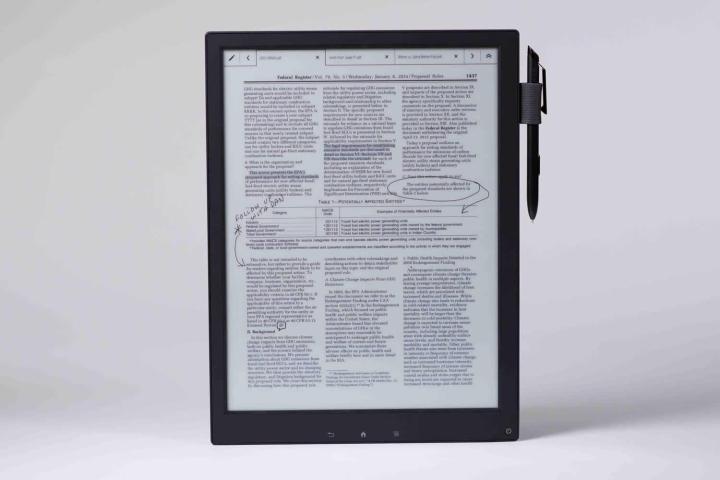
Detailed on a Sony splash page for the product and originally announced about ten months ago for the Japanese market, Digital Paper from Sony is a $1,100, 13.3-inch e-ink screen that allows users to read PDF documents as well as take written notes using the included stylus. While the product has been available in Japan for a while, Sony is teaming up with a legal and financial document management company called Worldox to bring the tablet to the United States during May 2014.
However, the tablet won’t be marketed directly at the average consumer. Instead, it will be targeted at the professional market, specifically for general businesses, legal practitioners and educators. Regarding specifications, the 13.3-inch screen offers a 1200 x 1600 16-level grayscale display, but does not include a backlight for reading in dimly lit areas. However, the large screen allows users to read full page documents without re-sizing or scrolling around the page.

In addition to the internal storage space of 4GB, Sony has included a microSD card slot on the device to increase document storage. About as thick as 30 sheets of paper when stacked, the Digital Paper includes Wi-Fi 802.11b/g/n connectivity and a rechargeable lithium-ion battery that lasts up to three weeks before requiring a recharge.
Oddly, the Digital Paper only works with PDF files and requires the conversion of Word, Excel or PowerPoint files to PDF format before those files can be accessed. Using the stylus, users can take notes on the page and save the PDF files with the additional notes on the page. Hypothetically, that feature could be particularly helpful to any college student taking notes in class. They could load a digital version of the class textbook and take notes on the book’s pages during class. Of course, Digital Paper users can also load a blank page that looks like notebook paper in order to take detailed notes during a meeting or class.


